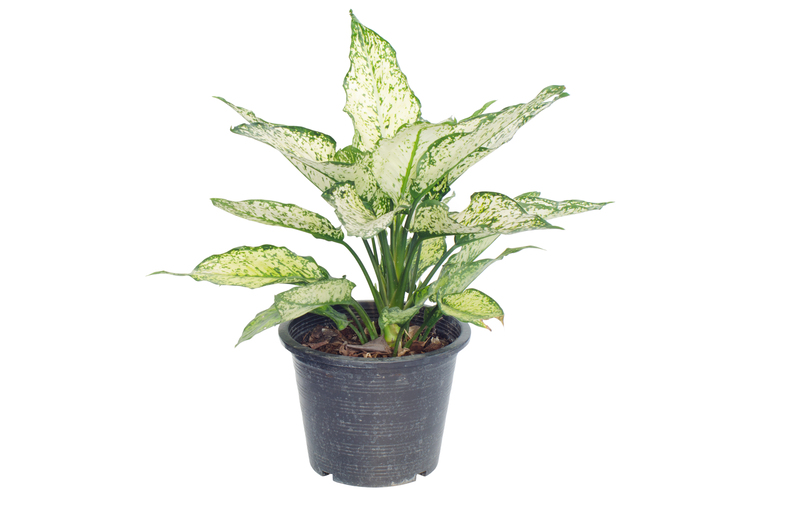Smart Approaches to Erasing a Tree Stump from Your Landscape
Removing a tree stump from your landscape can significantly enhance your property's aesthetics and functionality. Whether a recent tree removal or a long-standing stump, these leftover remnants can cause safety hazards, attract pests, and hamper your landscaping plans. Fortunately, several smart approaches exist for erasing a tree stump from your landscape, catering to various budgets, timeframes, and ecological concerns. In this comprehensive guide, we explore the best methods, their pros and cons, and key tips to ensure safe and effective stump removal.

Why Is It Important to Remove Tree Stumps?
Tree stumps might seem harmless at first, but they pose multiple issues on the property. Here's why erasing a tree stump is a wise choice:
- Safety Hazards: Stumps can trip family members, visitors, or pets, leading to injury.
- Pest Magnet: Rotting wood attracts termites, ants, fungi, and other pests that could spread to healthy trees or your home.
- Aesthetic Concerns: Tree stumps disrupt the smooth appearance of lawns and gardens.
- Obstructs Landscaping: Stumps hinder mowing, new plantings, landscaping, or construction projects.
By opting for efficient tree stump removal, you can reclaim your yard's full potential and prevent these issues from taking root.
Main Methods for Stump Removal
There are multiple smart approaches to getting rid of tree stumps, each suited to different scenarios. Let's explore the most effective techniques:
1. Professional Stump Grinding
Stump grinding is the most popular modern method for erasing a stump from your landscape. This process involves a specialized machine that grinds the stump and surface roots into wood chips, usually 6-12 inches below the ground.
- Speed: Most professionals remove an average stump in under two hours.
- Minimal Damage: Causes little disturbance to the surrounding lawn or beds.
- Ready for Replanting: The resulting mulch can fill the hole, making the area ready for planting grass or flowers.
Pros:
- Efficient and fast
- Least manual labor required
- Suitable for any stump size
Cons:
- Requires hiring a professional (can be costly)
- Rental grinders are available, but heavy and can be hazardous for inexperienced users
2. Manual Removal (Digging the Stump Out)
This approach uses basic landscaping tools like a spade, mattock, ax, and root saw to manually dig around and cut through the tree's roots until the stump is loose enough to lift or lever out.
- Best for: Small to medium stumps (up to 12 inches diameter)
- Low-cost: Only requires manual tools
- Eco-friendly: No chemicals or heavy machinery needed
Pros:
- Cost-effective DIY method
- Gives you full control of the process
- Immediate results
Cons:
- Labor-intensive and physically challenging
- Time-consuming for larger stumps
3. Chemical Stump Removal
Chemically erasing a tree stump is a method used for those who want minimal manual labor and can wait weeks or months for results. Commercial stump removal chemicals (potassium nitrate-based) accelerate rotting, making the stump soft and manageable for breakup and removal over time.
- How it works: Holes are drilled into the stump and filled with the chemical, which decomposes the wood over weeks.
- Best for: Large stumps, or situations where patience is available
Pros:
- Low effort and cost-effective
- No need for heavy machinery
Cons:
- Takes several weeks or months for full decomposition
- Chemicals may not be environmentally ideal, especially near vegetable gardens or water sources
Always follow safety instructions and local regulations when using chemical tree stump erasers.
4. Burning the Stump
Burning is an old-fashioned but effective way to erase tree stumps from a landscape, especially in rural areas where burning is permitted. After drilling holes into the stump, a fuel such as kerosene is added and the stump is ignited, burning it down to ash over several hours or days.
- Best for: Hard stumps or when other methods are not an option
- Legal Considerations: Always check local fire bans and regulations
Pros:
- Requires little manual labor after setup
- Can be very effective for large, dry stumps
Cons:
- Potential fire hazards if not closely monitored
- Produces smoke and is not suitable for all residential settings
- Leaves an ash-filled hole to fill in
5. Natural Decay (Letting Nature Take Its Course)
Sometimes, a smart approach to erasing a tree stump is the most patient one: encourage decomposition by keeping the stump moist, adding nitrogen-rich compost or manure, and drilling aeration holes. Over 1-3 years, fungi and microbes will break down the wood.
- Best for: Gardeners with patience and a desire to avoid chemicals or machinery
- Greenest choice: Eco-friendly and cost-free
Pros:
- Zero chemical or fuel use
- Minimal environmental impact
Cons:
- Slowest method--may take years
- Stump remains a visible obstacle for a long time
Choosing the Best Approaches for Your Landscape
Each method has its place depending on the stump size, location, urgency, available equipment, and environmental considerations. Here's a quick comparison to help you pick the smartest method for erasing a tree stump in your yard:
- For large, tough stumps: Stump grinding or burning are most effective.
- For small-medium stumps: Manual removal is doable, cost-effective, and eco-friendly.
- For non-urgent situations: Chemical removal or accelerated decomposition are low-labor options.
- For the greenest solution: Natural decay, especially if the area is not an immediate eyesore or hazard.
Factors to Consider Before Removing a Tree Stump
- Proximity to structures or utilities - Underground cables or pipes may complicate removal.
- Local regulations - Some HOA or municipalities have rules about burning or stump grinding.
- Future landscaping plans - If you plan to replant or build, full removal is necessary.
- Skill and safety - Manual or mechanical removal can be dangerous for beginners; consider professional help.
Step-by-Step Guide: How to Remove a Tree Stump
Let's outline a general procedure for one of the most accessible methods--manual removal--so you can confidently erase stumps from your landscape:
- Expose the roots: Use a shovel to dig around the tree stump, uncovering all major roots.
- Cut and loosen the roots: With a mattock, ax, or root saw, sever the roots from the stump.
- Free the stump: Wiggle the stump back and forth to loosen it from the soil. For large stumps, use a pry bar or leverage system.
- Remove and dispose: After the stump is free, remove it and chop any remaining major roots. Decide whether to haul it away or compost it in another part of your property.
- Fill the hole: Level the area with soil and compost, then replant grass, flowers, or shrubs.
Key Tips for Smart and Safe Tree Stump Removal
- Always wear proper safety gear: Gloves, safety glasses, steel-toe boots, and hearing protection are essential for manual or mechanical work.
- Call utility services: Before digging or grinding, ensure no underground cables or pipes are present.
- Dispose of debris responsibly: Wood chips and compost from grinding can be reused as mulch, while stumps can be taken to green waste facilities.
- Consult professionals: For large or complicated stumps, hiring a certified arborist or stump removal expert is the safest option.

Frequently Asked Questions on Tree Stump Erasure
How much does professional stump removal cost?
Prices range from $100 to $400 per stump depending on size, accessibility, and method (grinding costs more than chemicals or manual digging).
Can I plant a new tree where a stump was erased?
Yes, but clear away as much of the old stump and roots as possible, then amend the soil before replanting for best results.
Which methods are eco-friendly?
Manual removal and natural decay are the greenest stump removal approaches. Chemical methods can harm the soil if misused, while burning releases pollutants.
How long does it take for a stump to rot naturally?
Without intervention, it may take 3-10 years, depending on wood type and climate. Accelerating decay with compost or nitrogen speeds up the process.
Conclusion: Achieve a Beautiful, Hazard-Free Landscape
Erasing a tree stump from your landscape requires choosing the smartest approach based on your property's needs, budget, and environmental values. Whether you invest in professional stump grinding, tackle the project manually, use chemicals, or simply let nature break down the stump, careful planning and safety considerations will help you achieve a smooth, usable, and beautiful yard free from unsightly tree stumps. Choose the right method for your landscape, and reclaim your green space for future growth and enjoyment.